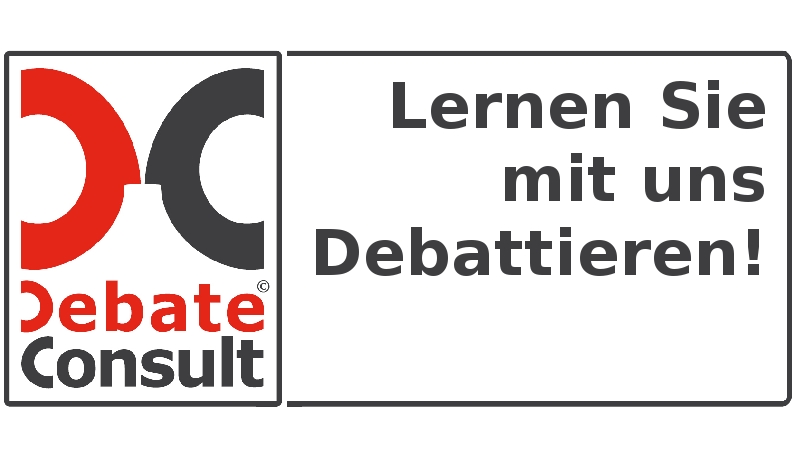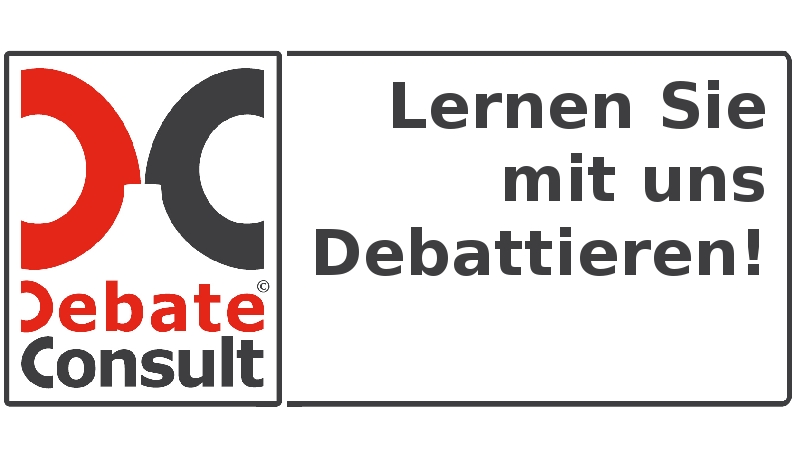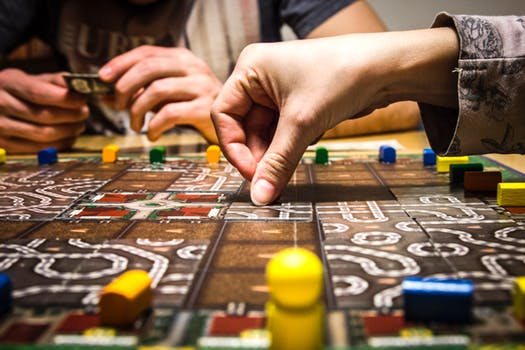This article offers insights into debating methods from the standpoint of Simona-Anca Mazilu, an experienced educator, trainer and coach who works in both the European and World Schools circuits.
Four Corner Debate
- The four corner debate starts with a question or statement, such as: “We should buy locally produced food.”
- Students are then afforded time to personally consider the statement and their view based on the topic.
- The four corners of the classroom are labeled “strongly agree,” “agree,” “disagree,” and “strongly disagree.”
- After personal consideration, the students move to the corner that most represents their position on the issue.
- The groups in each corner of the classroom then work together to come up with the best arguments for their assigned position on the issue.
- After a specified time for group discussion, each group presents their strongest arguments to the other groups. This can be made in presentation form or through a more directed debate where the professor or assigned students can moderate and direct time for each group to present and rebut.
- After the debate, students are permitted to switch sides if their personal views changed. This form of debate directly challenges the dualism of the argument, showing there are more than two-sides to an issue, and often, variations of the sides.
Role-Play Debate
- Role-play debates, balloon debates and variations of balloon debates also help to avoid dualistic debate models by assigning students to argue on behalf of different characters in a given situation.
- For instance, when debating the topic of national health care, students could be assigned to various roles, such as doctor, patient, a wealthy person, a poor person, a lawyer, a judge, an insurance company, the president, and so on.
- Through debating the issue from various points of view, the students can broaden their understanding of the issue and its complexity.
Fish Bowl Debate
- The fish bowl debates can take several different forms, but usually involve grouping chairs in a circle pattern.
- Several chairs are then placed inside the circle for teams representing the different positions of the debate.
- Chairs can also be added for several students representing the audience.
- To bolster attention among those outside the fishbowl, an empty chair can be added, which is free game, allowing someone from the outside to enter the fishbowl to ask a question or make an argument.
Think-Pair-Share Debate
- Think-pair-share debates require students to think and make notes alone about the issue.
- After personal reflection is completed, pairs are formed.
- The pairs then work together, comparing their notes and creating lists to support both sides of the issue.
- Once complete, each original pair of students is combined with another pair.
- The newly formed groups of four then discuss the issue, choose a position, and edit their list down to their best arguments.
- Finally, the groups of four present their position and reasons to the class.
Meeting House Debate
- In a meeting house debate, each team makes an opening argument.
- The class is then given the opportunity to question each side. The teacher/debate instructor serves as a moderator, ensuring each side gets an equal amount of time to argue.
- In order to encourage more class participation and prevent certain students from dominating the questioning, the moderator could assign cards to each student.
- After each question, the questioner gives up one card.
- Once a student runs out of cards, he or she cannot ask another question until all other students run out of cards.
- Alternatively, if three cards are assigned, a questioner that has two cards remaining may be prevented from asking another question until everyone else in the class has only two cards.
How to advance debate skills in your classroom
Debate camps, lectures, workshops, competitions are valuable ways of advancing debate skills, in one way or another, to a higher or smaller degree.
On a smaller scale, there is a cornucopia of exercise types that can be utilized to teach debating. For practical reasons, given the physical limits of this piece, from the perspective of their goals and objectives, here are just a few:
Other debating exercises
- speaking skills exercises
- motion type exercises
- argumentation exercises
- proposition/opposition case-building exercises
- points of information exercises
- find-the-principle exercises
- refutation and rebuttal exercises
Nevertheless, from the perspective of debaters themselves, the best way is the one that weds theory and practice, with an emphasis on the latter. In my view, learning by doing is the most powerful way of developing one’s debating skills. Just like one learns to read by reading, to write by writing, to speak by speaking, one will learn to debate and improve their skills and abilities by debating.
Therefore, debate camps and competitions should come first; workshops next, and lectures last – in terms of practicality and effectiveness or efficiency.
Share this article:
About the author

Simona-Anca Mazilu is a teacher of English, past Fulbright exchange teacher in Minnesota, USA , debate coach, adjudicator, teacher-trainer and founder of ARGO – the first academic debate club for high school students in Romania – in 1994.
She was the coach of the national team for Romania’s first two participations in the Worlds Schools Debating Championship: in Stuttgart, Germany, in 2004, and in Calgary, Canada, in 2005 – when Romania won 2nd place in the EFL (English as a Foreign Language) ranking.
The Context of Teaching Debating
The contexts in which I teach debate are wide-ranging:
- the classroom, both in my specialty classes as a teacher of English, and in the so-called “advisory” or “homeroom classes” – which consist of diverse educational activities conducted by a teacher – in and out of school – with the class they have been specifically assigned to take care of for a four-year period (i.e. for the entire duration of high school), which makes them very different from similar classes in other systems of education, such as the American one, for example.
- For more hands-on practice, I do debate training outside the regular classroom, in a debate club.
- I also teach debate at various training platforms:
- for other schools/institutions in my town and in the country;
- for the British Council in Bucharest;
- for the teaching staff in my town and the Prahova County Board of Education, etc;
- at various national and international events – as a teacher of English and/or debate trainer:
- the RATE (Romanian English Teachers’ Association) Conferences,
- the Macmillan Romania Conferences,
- the UniScan (an Express Publishing representative in Romania) Conferences etc;
- the TESOL/TEACHERS OF ENGLISH TO SPEAKERS OF OTHER LANGUAGES MACEDONIA-Thrace Conventions, in Greece;
- the IDEA/INTERNATIONAL DEBATE EDUCATION ASSOCIATION Youth Forums,
- the WSDA/WORLD SCHOOLS DEBATE ACADEMY in Slovenia, etc.


